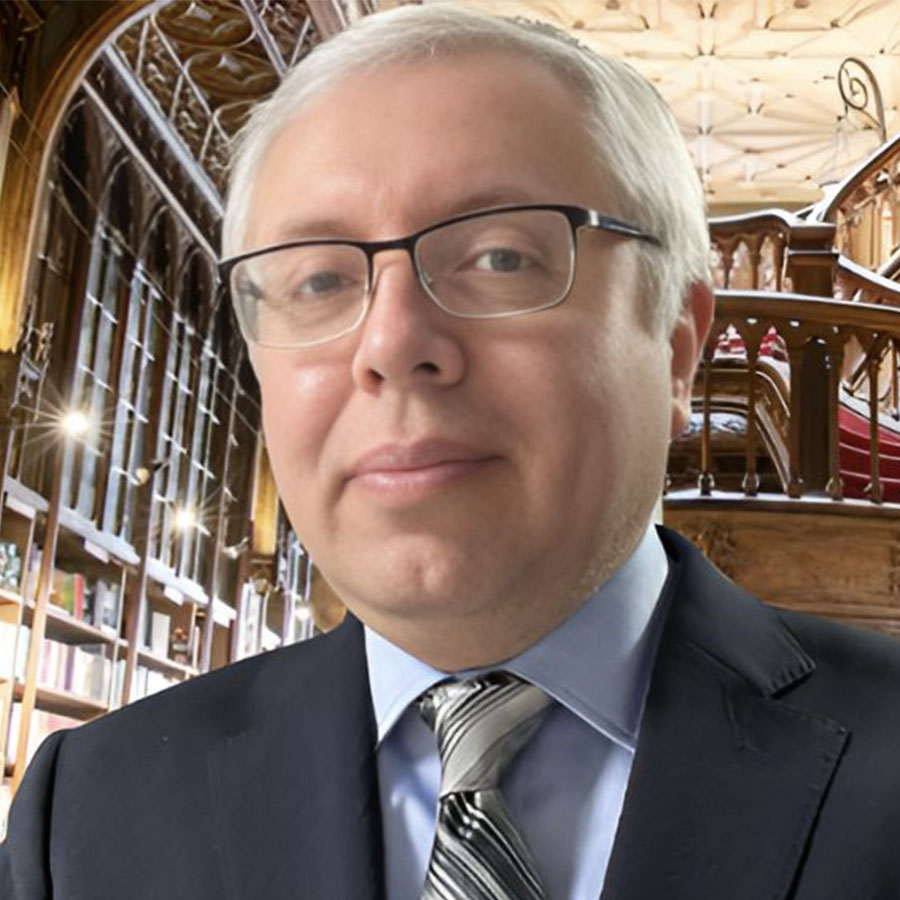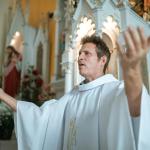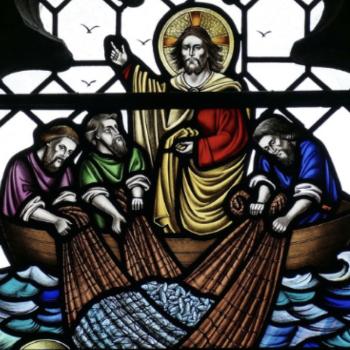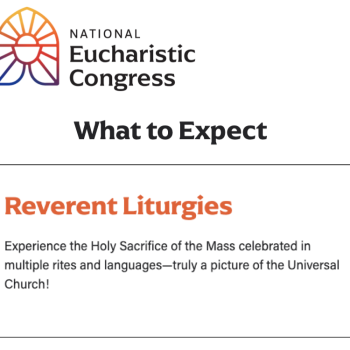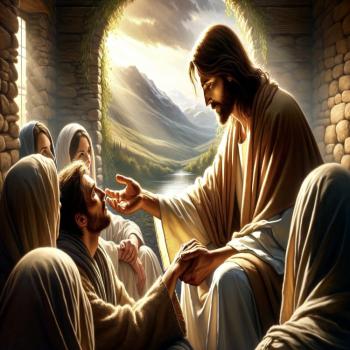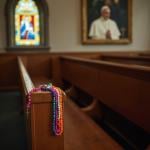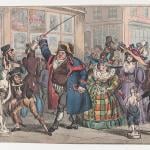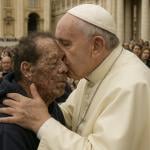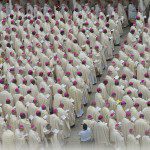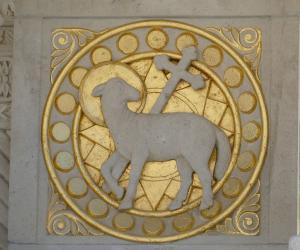
In this second installment of this special series, we analyze the figure of Christ, as paschal Lamb, in the light of the first Eucharistic Prayer Preface of Easter time.
In the previous article we explained what the Preface of the Eucharistic Prayer is, its history, its structure and its theological and catechetical importance. Let’s remember these important aspects:
Lex orandi, lex credendi. What we pray is what we believe. Thus, the euchological texts —what the Church says— in the Sacred Liturgy are always a very rich catechetical source. The prefaces of the Eucharistic Prayer are not the exception. Especially their embolisms, which liturgically explain to us the specific reason why we thank God in each mass, but which catechetically express an important theological teaching.
Thus, in this and the following installments, we will stop to consider the embolisms of each Preface of Easter Time, in order to learn from the Christology that they are developing little by little.
Christ our Passover
To start this systematic study, it is necessary to pay attention the introduction of this Easter preface. Its initial words are, in general, the same as all the prefaces:
It is truly right and just, our duty and our salvation,
at all times to acclaim you, O Lord,
and then a significant variant appears:
but on this time above all
to laud you yet more gloriously,
when Christ our Passover has been sacrificed.
The last sentence, which explains to us precisely why it is right and just to praise God on this day, is of interest to us, since it has a strong connection with the theme of embolism of this first preface: Christ our Passover has been sacrificed.
This expression is from St. Paul, “Clear out the old yeast, so that you may become a fresh batch of dough, inasmuch as you are unleavened. For our paschal lamb, Christ, has been sacrificed” (1 Cor 5:7).
This is why the title of Preface I of Easter is “De mysterio paschali”, “The Paschal Mystery”.
It’s noteworthy how Paul specifies that the paschal Lamb, which is Christ, has been sacrificed. This means that the death of Jesus on the cross is not only an execution by the Romans imposed by the Jewish authorities, but it is a propitiatory act of Jesus himself, who offers his life as a lamb that is slain over the altar.
As Paul will explain later to the Romans, “They are justified freely by his grace through the redemption in Christ Jesus, whom God set forth as an expiation, through faith, by his blood, to prove his righteousness because of the forgiveness of sins previously committed” (Rom 3:24-25). Furthermore, reading this same text in Greek, “δικαιούμενοι δωρεὰν τῇ αὐτοῦ χάριτι διὰ τῆς ἀπολυτρώσεως τῆς ἐν Χριστῷ Ἰησοῦ ὃν προέθετο ὁ θεὸς ἱλαστήριον διὰ τῆσ πίστεως ἐν τῷ αὐτοῦ αἵματι εἰς ἔνδειξιν τῆς δικαιοσύνης αὐτοῦ διὰ τὴν πάρεσιν τῶν προγεγονότων ἁμαρτημάτων”, we find that expiation is used to translate ἱλαστήριον. In the Septuagint, this Greek word refers to the gold cover of the ark of the covenant that was sprinkled with blood by the high priest on the Day of Atonement, to restore the relationship of covenant with God, broken by sins (Ex 24:1-8; Lv 16:14-17).
The Preface embolism
In the embolism we find that, in this mass, we acclaim God:
For he is the true Lamb
who has taken away the sins of the world;
by dying he has destroyed our death,
and by rising, restored our life.
Christ is the true Lamb
Christ is the true Lamb who took away the sin of the world, prefigured in the Paschal Lamb of the Exodus, whose blood saved the people of Israel from the destroying angel. He, the Lamb pointed out by John the Baptist, takes upon himself our sins and destroys them on the cross: this is the admirable exchange for which we can sing in the Easter Proclamation on the Easter Vigil on the Holy Night: “O happy fault that earned so great, so glorious a Redeemer!”
In the New Testament, John the Baptist was the first to refer to Jesus as “the Lamb of God, who takes away the sin of the world” (Jn 1:29).
Decades later, Peter will make use of the Levitic sacrificial language (Lv 14:10) to say that Christ is “a spotless unblemished lamb” (1 P 1:19).
The Book of Revelation presents the Lamb in the middle of the throne, slain yet standing “Then I saw standing in the midst of the throne and the four living creatures and the elders, a Lamb that seemed to have been slain”(Rev 5:6).
Christ is the Lamb who has taken away the sins of the world
The colloquial phrase “scapegoat” comes from the Old Covenant, in which lambs were sacrificed seeking God’s forgiveness for all the sins committed by his people. But this effort was actually ineffective. The blood of the lambs they consumed on the night of the liberation from slavery of Egypt, with which they marked the doors of their houses, will have saved their firstborn from death, but only for that night. And the blood of the lambs beheaded on the altar of the Temple was incapable of erasing sins.
It is only Christ the Lamb par excellence, who, by offering himself dying on the cross, sheds his divine blood that purifies us and for which our sins are forgiven.
This expression of the Preface I of Easter is precisely the one with which we worship Christ in every Mass, once the priest breaks (fractures) the sacred Host, sacramentally representing the moment when Christ is immolated (destroyed) on the Cross in the Eucharistic sacrifice. Because he offers himself for the forgiveness of our sins, we implore him “Lamb of God, you take away the sins of the world, have mercy on us.”
Christ died to destroy our death
Upon resurrecting, Jesus himself overcame his own death and thus our death has been destroyed. It is the reason why the Apocalypse presents that dead Lamb, but at the same time, standing, to represent his victorious resurrection.
Paul’s Christology affirms that “our savior Christ Jesus destroyed death and brought life and immortality to light through the gospel” (2 Tim 1:10). This words of the embolism come from this verse.
Christ resurrected to restore our life
The Book of Wisdom affirms that “God did not make death, nor does he rejoice in the destruction of the living. For he fashioned all things that they might have being” (Wis 1:13-14a). By lying, “it was the wicked who with hands and words invited death” (v. 16a). However, it was Eve who fell into the temptation and made Adam to fall into it as well. Nonetheless, no one has the power to ruin God´s plan. Out of love, he sent his Son to offer himself for our salvation. He earned the forgiveness of our sins through his sacrifice on the cross. Resurrecting three days later, he restored the eternal life we had lost, but that his Father had planned for us since the beginning.
An overwhelming paschal joy
All this gives us plenty of reason to feel rejoiced when celebrating the Passover of Christ throughout this liturgical time. Hence, the conclusion of the Easter prefaces always ends:
Therefore, overcome with paschal joy,
every land, every people exults in your praise
and even the heavenly Powers, with the angelic hosts,
sing to the their the unending hymn of your glory;
as they acclaim:
Holy, Holy, Holy Lord…


